The free museums in Avignon
Restaurants and Foods of Provence
Other cities to visit
The Avignon Walking Tour: History and Legend is as much a journey through time as it is through the charming streets of this historic city. Avignon’s rich history comes to life through the stories of remarkable individuals who have shaped the city and its legacy. From popes to poets, warriors to artists, these figures offer a tapestry of fascinating connections to the City of the Popes.
Here’s a list of the remarkable characters and places that will be mentioned during our tour (in order of appearance):
Costa Rica
Independence from Spain: September 15, 1821
Population 5 million - Territory: 51,100 km2
Army abolished in 1949
Costa Rica, is renowned for its lush rainforests, pristine beaches, and diverse wildlife. Known as the “rich coast,” it boasts incredible biodiversity, volcanoes, and eco-tourism adventures. With a commitment to sustainability and “Pura Vida” lifestyle, Costa Rica offers vibrant culture, friendly locals, and unforgettable natural beauty.
> Mentioned at the beginning of our tour
Unesco World Heritage Site since 1995
Due to its historical significance, particularly its well-preserved medieval architecture. The city is renowned for the Palais des Papes, the largest Gothic palace in the World, and its impressive city walls. Avignon’s rich history as the seat of the papacy during the 14th century, along with its role in medieval Christian history, earned it the distinction. The designation highlights the city’s cultural and architectural heritage, which reflects both its religious importance and its influence on European history.
> Mentioned at the Daladier Bridge
Walt Disney
Born: December 5, 1901, Chicago, Illinois, USA
Died: December 15, 1966, Burbank, California, USA
Legend has it that Walt Disney may have found inspiration for Sleeping Beauty’s Castle during a visit to the Palais des Papes in Avignon. Walt Disney was a guest at Hotel d'Europe in Avignon in the 1950s.
> Mentioned at the Daladier Bridge and Hotel d'Europe

The Rhône
Length: 813.69 km
Source: Rhône Glacier in Switzerland
Mouth: Mediterranean Sea
The Rhône River is a major waterway flowing through Switzerland and France. Known for its striking beauty, it winds through vineyards, medieval towns, and vibrant cities like Lyon, Avignon and Arles. Rich in history, it supports trade, agriculture, and tourism, connecting people to Europe’s cultural heritage.
> View from the Daladier Bridge
La Camargue
Area 930 km2 (360 sq mi)
Department of Bouches-du-Rhône - Occitanie
Ramsar site as a "Wetland of International Importance" since 1986
La Camargue, in southern France, is a stunning natural region known for its wild beauty. It features vast salt flats, marshes, and wetlands, home to iconic flamingos, white horses, and black bulls. A haven for wildlife lovers and a unique landscape to explore!
> Mentioned on the Daladier Bridge
The Salt Mines
500,000 tons of salt per year
The salt mines of Camargue are a defining feature of the region, producing the renowned “fleur de sel” and sea salt for centuries. These vibrant pink-hued salt pans, shaped by algae and rich minerals, are not only a vital economic resource but also a haven for wildlife, including flamingos.> Mentioned on the Daladier Bridge
Aigues Mortes
Area: 57.78 km2 (14,278 acres) - Population: 8707
Region: Occitanie - Provence
Aigues-Mortes, is a beautifully preserved medieval town surrounded by impressive 13th-century ramparts. Founded by King Louis IX as a port for the Crusades, it boasts a rich history and charming streets lined with shops and cafes. Highlights include the Constance Tower and panoramic views from the walls. A must-visit gem in southern France!
> Mentioned on the Daladier Bridge
The Flood of 1856
The flood of Avignon in 1856 was one of the most devastating in the city’s history. Triggered by heavy rains, the Rhône River overflowed its banks, submerging much of the city. Homes, bridges, and crops were destroyed, and many residents were forced to evacuate. The disaster highlighted the need for improved flood defenses, shaping future infrastructure to protect the region.
> Mentioned on the Daladier Bridge
Avignon floodable city
Avignon faces significant flood risks due to its location along the Rhône River. While modern flood defenses, including levees and monitoring systems, have been implemented, climate change and seasonal heavy rains continue to pose challenges. The risk is a constant reminder of the city’s delicate balance with the powerful Rhône.
> Mentioned on the Daladier Bridge
Louis-Napoleon III
Born: April 20, 1808, Paris, France
Died: January 9, 1873, Chislehurst, England
Emperor Napoleon III played a significant role in the modernization of France. While his impact on Avignon was indirect, his legacy influenced its transformation into a modern city. His vision brought urban development, connecting Avignon to the rest of France through railways and infrastructure that shaped its future. Brought funds to the city to help after the floods of 1856. Inaugurated the Hotel de Ville in 1852.
> Mentioned on the Daladier Bridge, Hotel de Ville and Place Carnot
The Island of the Barthelasse
Area: 9,8 km2 (2274 acres) and 934 inhabitants - 2.5 times New York's Central Park
Became part of Avignon in 1856
The Île de la Barthelasse, nestled in the Rhône River, is a tranquil escape in Avignon. The biggest river island in Europe, it offers lush greenery, walking trails, and stunning views of the city’s medieval ramparts. Ideal for cycling and picnicking, it’s a serene retreat steeped in natural beauty.
> View from the Daladier Bridge and the Cathedral
Tower of Philip the Fair
Total height: 39 m (128 feet)
End point of the Bridge Saint-Bénézet (Bridge of Avignon)
The Tower of Philippe le Bel, located in Villeneuve-lès-Avignon, stands as a striking medieval monument. Built in the late 13th century, it once guarded the bridge linking Avignon and Villeneuve. This tower symbolizes royal authority and offers panoramic views of the Rhône River and the surrounding landscape.
> Partial views from the Daladier Bridge and the Avignon Cathedral
Villeneuve-lès-Avignon
Location: Occitania, Gard
Population: 12,617 - Area: 18.27 km2 (4515 acres)
Villeneuve-lès-Avignon, once the gateway to the Papal States, is a charming medieval town on the Rhône’s west bank. Known for its imposing Fort Saint-André, Philippe-le-Bel Tower, and serene Chartreuse monastery, it blends rich history with picturesque beauty. Its quaint streets and vibrant markets make it a delightful cultural escape.
> Partial views from the Daladier Bridge and the Avignon Cathedral
Saint Bénézet Bridge (Bridge of Avignon)
Construction: 1177 - 1185 - Abandoned in the mid-17th century
Original length: 900 m (980 yd) and 22 stone arches
The Saint-Bénézet Bridge, or Pont d’Avignon, is a medieval marvel spanning part of the Rhône River in Avignon. Built in the 12th century, it was inspired by a shepherd’s divine vision. Though only four arches remain, its legends and the famous song “Sur le Pont d’Avignon” keep its charm alive. Learn the lyrics here. > View from the Daladier Bridge
The Drac of Beaucaire
Legend from 1250
A half-devil, half-dragon monster, hidden in the depths of the Rhone, it changes shape according to circumstances. The Drac is invisible to human eyes but can magically take a human shape.
> Mentioned at the Daladier Bridge
The Ramparts of Avignon
Historic monument of France and UNESCO world heritage site
Length: 4.33 km (2.69 mi)
Built between 1355 and 1373
The Ramparts of Avignon are impressive medieval fortifications that encircle the historic center of the city. These walls protected Avignon during turbulent times and remain a key symbol of the city’s rich history.
> View outside the Ramparts de l'Oulle
Pope Innocent VI
Born: c. 1282, Beyssac, France
Died: September 12, 1362, Avignon, France
A key pope of the Avignon Papacy (1352–1362), Innocent VI promoted education and diplomacy. He also initiated the construction of fortifications around Avignon, ensuring its safety during turbulent times.
> Mentioned outside the Ramparts de l'Oulle
The Porte de l'Oulle
Located in the northwest of the city, facing the Rhône and the island of Barthelasse and opens onto Rue Folco de Baroncelli. Built in the 14th century, it was rebuilt on a slightly modified alignment in 1786. It was definitively destroyed in 1900 under the administration of Gaston Pourquery of Boisserin. > Mentioned outside Porte de l'Oulle
Major Joseph Pourquery de Boisserin
Born: 1825, Avignon, France
Died: 1896, Avignon, France
During his term as mayor of Avignon his intention was to destroy the ramparts of the city as they were considered as an impediment for the modernization of the city. Several openings in the original ramparts were made during that time. Fortunately, the ramparts were designated as Historic Monuments of France in 1906, stopping any further demolition.
> Mentioned outside Porte de l'Oulle
Louis des Balbes de Berton de Crillon
Born: c. 1541, Murs, France
Died: December 2, 1615, Avignon, France
Known as “Crillon the Brave,” this fearless warrior from the 16th century was a celebrated hero of the French Wars of Religion. Avignon honors his legacy through Place Crillon, a central hub of the city.
> mentioned briefly while crossing Place Crillon
Le Jeu de Mail
Ancient outdoor game, originating in the Late Middle Ages and mostly played in the Kingdom of Naples and France. Gave rise to numerous modern sports, such as golf, croquet, hockey and its variations, and polo.
> mentioned outside of the Old Comedy of Avignon
Louis XIV (the Sun King)
Born: September 5, 1638, Saint-Germain-en-Laye, France
Died: September 1, 1715, Versailles, France
The Sun King’s reign marked a golden age for French arts and fashion. His influence is evident in Avignon’s heritage of grandeur, from the opulent architecture to its traditions of elegance and refinement.
The Sun King visited Avignon in 1669 on his way to his marriage to Maria Teresa of Austria, Princess of Spain.
> mentioned outside of the Old Comedy of Avignon
Maria Theresa of Austria (Princess of Spain and Queen of France)
Born: September 10, 1638, El Escorial, Spain
Died: July 30, 1638, Versailles, France
Queen of France from 1660 to 1683 as the wife of King Louis XIV. She was born an Infanta of Spain and Portugal as the daughter of King Philip IV and Elisabeth of France, also Archduchess of Austria. Her marriage to Louis XIV in 1660 was part of a strategic political alliance between France and Spain
> mentioned outside of the Old Comedy of Avignon
Thomas Lainée
Born: 1682 in Paris, France
Died: January 29, 1739, Avignon, France
Started his career working in Paris in the palace of Versailles. An architect of vision, Thomas Lainée was involved in the construction of Avignon's first theater, the Chapel of the Black Penitents of Mercy as well as many other buildings.
> mentioned outside of the Old Comedy of Avignon
Old Comedy of Avignon
Operation: 1732 - 1825
The first venue in the city of the Popes that was built specifically to stage plays. The biggest families of Avignon came together in a joint stock company to build a real theater.
> mentioned outside of the Old Comedy of Avignon
Italian Style Theater
The Italian Theater style, originating in Italy during the Renaissance, emphasizes dramatic realism and architectural grandeur. It features a proscenium arch, creating a “window” for the audience, and intricate stage designs. This style influenced theaters across Europe, laying the foundation for modern theatrical productions with its focus on perspective and spectacle.
> mentioned outside of the Old Comedy of Avignon
1790 Municipal Elections
Filippo Casoni, the pope's representative in Avignon, on 25 March, authorized reformed municipal elections. This new municipality abolished the Strappado and the Inquisition. However, on 21st April, the pope rejected all concessions given by Casoni, pushing Avignon residents to recognize that change would only happen through union with France.
> mentioned outside of the Old Comedy of Avignon
1791 Referendum on the status of the Comtat Venaissin
Held on August 4, it allowed the people of the Comtat Venaissin, including Avignon, to vote on their future following centuries of Papal rule. Of the 98 municipalities, 52 voted for France and 19 for the Papal States. Annexation was confirmed by the National Assembly on September 14, 1791. This decision was driven by the growing influence of Enlightenment ideals and the French Revolution, marking the official annexation of the Comtat Venaissin into France and transforming its political and cultural landscape.
> mentioned outside of the Old Comedy of Avignon
Hotel d'Europe
The Hôtel d’Europe in Avignon is a historic, luxury hotel dating back to the 1775 as Hotel Graveson. Known for its elegant architecture and charming ambiance, it has hosted numerous famous guests, including writers and artists. Located near the city center, it remains a symbol of Avignon’s refined hospitality.
> mentioned outside of the Hotel d'Europe
Occupation of Avignon
Avignon was occupied by German forces in November 1942, following the invasion of the Free Zone. The city endured air raids and hardships under occupation until its liberation on August 25, 1944, by the French Resistance and Allied forces. The retreating Germans destroyed parts of the Rhône bridges, but Avignon quickly recovered, preserving its historical heritage.
> mentioned outside of the Hotel d'Europe and the Cathedral
The second rampart
Avignon was occupied by German forces in November 1942, following the invasion of the Free Zone. The city endured air raids and hardships under occupation until its liberation on August 25, 1944, by the French Resistance and Allied forces. The retreating Germans destroyed parts of the Rhône bridges, but Avignon quickly recovered, preserving its historical heritage.
> mentioned at the beginning of Rue Joseph Vernet
Joseph Vernet
Born: August 14, 1714, Avignon, France
Died: December 3, 1789, Paris, France
A famous painter born in Avignon, known for his maritime scenes and landscapes. Louis XV requests from him 20 paintings of the ports of France.
> mentioned at the beginning of Rue Joseph Vernet
Sherlock Holmes
Fictional detective created by British author Arthur Conan Doyle in 1887.
According to book "The Greek Interpreter" Holmes' grandmother would be the sister of painter Vernet from France.
> mentioned at the beginning of Rue Joseph Vernet
Sir Arthur Conan Doyle
Born: May 22, 1859, Edinburgh, Scotland
Died: July 7, 1930, Crowborough, England
Sir Arthur Conan Doyle visited Avignon, rumored to have drawn inspiration from the city’s mysterious atmosphere for his detective stories.
> mentioned at the beginning of Rue Joseph Vernet
Jacques Doucet
Born: February 19, 1853, Paris, France
Died: October 30, 1929, Paris, France
A patron of the arts and collector, Doucet helped preserve manuscripts and artworks, bridging Avignon’s historical legacy with modern innovation. His art collection is held in the Angladon Museum in Avignon and contains 3 paintings by Joseph Vernet.
> Angladon Museum mentioned at the beginning of Rue Joseph Vernet
Napoleon Bonaparte
Born: August 15, 1769, Ajaccio, Corsica
Died: May 5, 1821, Saint Helena
Napoleon visited Avignon during his early military campaigns, leaving traces of his legacy as a military and political titan. It is said that in Avignon he wrote his pamphlet "Le Souper de Beaucaire". Also passed by the city while being exiled to the Island of Elba.
> mentioned 23bis Rue Joseph Vernet and Church Saint Agricol

Marseille
Founded: 600 years BC by Greek settlers from Phocaea (probably the oldest city in France)
2nd largest city in France
This bustling Mediterranean port is rich in history, featuring landmarks like the Old Port and Notre-Dame de la Garde. Its diverse culture and maritime heritage make Marseille a vibrant and historically significant destination.
> mentioned 23bis Rue Joseph Vernet
Beaucaire
Founded: 7th century BC
Population: 15,680 inhabitants - Located in the Department of Le Gard, Occitania
Beaucaire, a historic town in southern France, sits along the Rhône River within the heart of Provence. Known for its medieval Château de Beaucaire and annual Fête de la Madeleine, the town captivates visitors with its rich history, scenic streets, and vibrant cultural traditions.
> mentioned 23bis Rue Joseph Vernet
Le Souper de Beaucaire
Le Souper de Beaucaire (The Supper at Beaucaire) is a political pamphlet written by Napoleon Bonaparte in 1793 during the French Revolution. Set as a fictional conversation among citizens of different factions in Beaucaire, it advocated for unity under revolutionary ideals, showcasing Napoleon’s strategic thinking and helping launch his political and military career.
> mentioned 23bis Rue Joseph Vernet
Elba
Island off the coast of Tuscany Italy.
The third largest island of Italy, 10 km (6.2 mi) from Piombino
Napoleon Bonaparte’s first place of exile in 1814 after his abdication. Despite his diminished empire, he governed the island, improving infrastructure and economy. After ten months, he escaped.
> mentioned at Rue Joseph Vernet
The Battle of Waterloo
Fought on June 18, 1815, marked Napoleon Bonaparte’s final defeat. After escaping exile on Elba, Napoleon ruled France during the “Hundred Days,” rallying his army to reclaim power. At Waterloo, British, Prussian, and allied forces decisively ended his reign, leading to his exile on Saint Helena.

Chapel of the Oratory
The Chapelle de l’Oratoire in Avignon, completed in 1749. Originally a place of worship, it now serves as a venue during the Festival of Avignon. Its rich history and beautiful design make it an essential part of the city’s cultural heritage.
> mentioned outside of the Chapel of the Oratory
Congregation of the Oratory of Jesus and Mary Immaculate
Founded in 1611 by Pierre de Bérulle in France, is a Catholic clerical society dedicated to education, preaching, and pastoral work. Inspired by St. Philip Neri’s Oratory, it emphasizes community life, intellectual development, and spiritual guidance, fostering personal holiness and public ministry.
> mentioned outside of the Chapel of the Oratory
Saint Agricole
Born: c. 630, Avignon, France
Died: c. 700, Avignon, France
In 1647, he was declared patron saint of the city of Avignon. Saint Agricole is celebrated for protecting the city from pestilence and floods, and his legacy is tied to local miracles, including the story of the stork invasion. His feast day is September 2.
> mentioned at Rue Saint Agricole and Saint Agricole Church
Bell Tower of the Collegiate Church of Saint Agricole
> mentioned at Rue Saint Agricole
Collegiate Church of Saint-Agricol
Built in the 7th century by Saint Agricol. The side naves are bordered by ten chapels. Raised to the rank of collegiate church by John XXII in 1321. Gothic in style, listed as a historic monument in 1980. The Baroque-style high altar, sculpted by Jean-Baptiste II Péru in 1767, contains, in a lead box, the relics of Saint Magne and Saint Agricol. Restored in 1802 after the French Revolution. Consecrated as a cathedral, pending the rehabilitation of Notre-Dame des Doms.
> mentioned at Saint Agricole Church
The Mistral
Natural phenomenon
It is a strong, cold, northwesterly wind that blows from southern France into the Gulf of Lion in the northern Mediterranean. The name Mistral derives from Provenzal language: The Master
> mentioned at Rue Racine
Pablo Picasso
Born: October 25, 1881, Málaga, Spain
Died: April 8, 1973, Mougins, France
Picasso lived the last 12 years of his life in Provence and admired the region’s light and landscapes, influencing his groundbreaking art. In May 1970, 167 paintings and 50 drawing by Picasso were displayed in the Palace of the Popes. Another exhibition was organized in 1973 shortly after his death.
> mentioned at Rue Corneille
The Provenzal Language
Dialect of the Occitan language historically spoken throughout Provence. It flourished during the Middle Ages as a literary language, especially among troubadours. While French became dominant after the annexation of Provence to France, it is still spoken by some and preserved through cultural initiatives, though its use has significantly declined. > Mentioned outside the Town Hall (Hotel de Ville)
Frédéric Mistral
Born: September 8, 1830, Maillane, France
Died: March 25, 1914, Maillane, France
French writer and lexicographer who played a key role in reviving the Occitan language and culture. A passionate advocate for Provençal heritage, he co-founded the Félibrige movement to promote regional literature. His epic poem Mirèio (Mireille) won him the Nobel Prize in Literature in 1904. Mistral also compiled the Tresor dóu Felibrige, the most comprehensive Occitan-French dictionary. His work helped preserve and celebrate the identity of southern France.
> mentioned at Hotel de Ville
Pope Clement VI
Born: c. 1291, Maumont, France
Died: December 6, 1352, Avignon, France
Known for purchasing Avignon from Joanna of Naples in 1348, was the fourth Avignon pope and one of the most influential. Known for his patronage of the arts and lavish court. During the Black Death, he protected Jews from persecution and granted mass absolutions. His reign marked the height of the Avignon Papacy’s power and opulence.
> mentioned at Hotel de Ville
Queen Jeanne of Naples and Countess of Provence
Born: 1326, Naples, Italy
Died: May 12, 1382, Muro Lucano, Italy
Queen Jeanne was a powerful and controversial ruler. In 1348, she sold Avignon to Pope Clement VI to fund her struggles for the Neapolitan throne. Her reign was marked by political intrigue, multiple marriages, and conflicts, including the accusation of her involvement in the murder of her first husband. Despite challenges, she maintained control over Provence until her assassination in 1382.
> mentioned at Hotel de Ville
Andrew, Duke of Calabria
Born: October 30, 1327, Aversa, Italy
Died: September 18, 1345, Aversa, Italy
The first husband of Queen Joanna I of Naples. Originally from the Hungarian royal family, he was meant to rule Naples alongside Joanna, but tensions arose between his Hungarian supporters and the Neapolitan nobility. In 1345, he was assassinated in Aversa under mysterious circumstances, allegedly with Joanna’s knowledge or consent. His murder sparked a long-lasting conflict between the Kingdom of Naples and Hungary.
> mentioned at Hotel de Ville
Louis I of Hungary
Born: March 5, 1326, Visegrád, Hungary
Died: September 10, 1382, Nagyszombat, Hungary
King of Hungary and later Poland, he expanded his kingdom through military campaigns in the Balkans and Italy. After the assassination of his brother Andrew, Duke of Calabria, he waged war against Queen Jeanne I of Naples, briefly seizing her kingdom. Known for his strong administration and legal reforms, he left a lasting impact on Central Europe.
> mentioned at Hotel de Ville
Molière (Jean-Baptiste Poquelin)
Born: January 15, 1622, Paris, France
Died: February 17, 1673, Paris, France
Molière’s touring theater company performed in Avignon, marking the city as a cultural hub for the arts even before its famous festival.
> mentioned at the Avignon Opera House
Pierre Corneille
Born: June 6, 1606, Rouen, France
Died: October 1, 1684, Paris, France
one of France’s greatest playwrights
> mentioned at the Avignon Opera House
King René of Anjou
Born: January 16, 1409, Angers, France
Died: July 10, 1480, Aix-en-Provence, France
Known as the “good king,” René brought cultural and artistic refinement to the Provence region, including Avignon, in the 15th century.
> mentioned at the Avignon Opera House
Francesco Petrarca (Petrarch)
Born: July 20, 1304, Arezzo, Italy
Died: July 19, 1374, Arquà Petrarca, Italy
Lived in Avignon and composed poetry inspired by his muse, Laura de Noves. Through his Canzoniere, he establishes ties between Avignon to one of literature’s most famous unrequited romances.
> mentioned at the Avignon Opera House
Laura de Noves (Laura de Sade)
Born: 1310, Noves, France
Died: 1348, Avignon, France
Immortalized by Petrarch’s poetry, Laura’s presence in Avignon symbolizes the city’s romantic allure.
> mentioned at the Avignon Opera House
Donatien Alphonse François de Sade (Marquis de Sade)
Born: June 2, 1740, Paris, France
Died: December 2, 1814, Charenton, France
The infamous Marquis de Sade was closely tied to Provence, particularly the nearby Château de Lacoste, which was part of his family’s holdings. Avignon and the surrounding region witnessed some of his controversial exploits.
> mentioned at the Avignon Opera House
Philip IV of France (Philippe IV le Bel)
Born: April 1268, Fontainebleau, France
Died: November 29, 1314, Fontainebleau, France
King of France from 1285 to 1314. He strengthened the monarchy by centralizing power, clashing with the Papacy, and dissolving the Knights Templar in 1307. His reign saw the expulsion of the Jews from France and the establishment of the Estates General in 1302. His conflicts with Pope Boniface VIII led to the Avignon Papacy, marking a significant shift in church-state relations.
> mentioned at the Avignon Opera House
Pope Boniface VIII
Born: c. 1230, Anagni, Italy
Died: October 11, 1303, Rome, Italy
Head of the Catholic Church from 1294 to 1303. He is best known for his conflicts with Philip IV of France, particularly over taxation of the clergy and papal authority. In 1302, he issued the Unam Sanctam bull, asserting the supremacy of the pope over secular rulers. His struggle with Philip culminated in his violent arrest at Anagni in 1303, after which he died shortly afterward. His papacy marked a turning point in the decline of papal political power. Dante Alighieri placed him in the eighth circle of his Inferno.
> mentioned at the Avignon Opera House
Guillaume de Nogaret
Born: c. 1260, Saint-Félix-Lauragais, France
Died: April 1313, Paris, France
A loyal advisor to Philip IV, Guillaume played a key role in the downfall of the Knights Templar, shaping the political intrigue surrounding Avignon.
> mentioned at the Avignon Opera House
Jacques de Molay
Born: c. 1243, Molay, France
Died: March 18, 1314, Paris, France
The last Grand Master of the Knights Templar, de Molay’s tragic fate remains linked to Avignon’s papal history.
> mentioned at the Avignon Opera House
The Palace of the Popes
Built in two phases: The Old Palace and the New Palace.
> external view at the Plaza of the Palace
Pope John XXII
Born: c. 1244, Cahors, France
Died: December 4, 1334, Avignon, France
The second Avignon pope, John XXII, significantly expanded the city’s political and religious influence.
> mentioned at the Palace of the Popes
Pope Benedict XII
Born: c. 1280, Saverdun, France
Died: April 25, 1342, Avignon, France
Commissioned the Palais des Papes, leaving an indelible architectural legacy.
> mentioned at the Palace of the Popes
Pope Gregory XI
Born: c. 1329, Maumont, France
Died: March 27, 1378, Rome, Italy
The last pope to reside in Avignon, Gregory XI moved the papacy back to Rome in 1377.
> mentioned at the Palace of the Popes
Pope Urban VI
Born: 1318, Naples, Italy
Died: October 15, 1389, Rome, Italy
His election sparked the Western Schism, dividing the papacy between Avignon and Rome.
> mentioned at the Palace of the Popes
Pope Clement VII (Anti-Pope)
Born: May 23, 1342, Avignon, France
Died: September 16, 1394, Avignon, France
The first Avignon pope of the Western Schism, Clement VII maintained the city’s role as a papal seat.
> mentioned at the Palace of the Popes
Thomas Aquinas (Saint Thomas)
Born: January 28, 1225, Roccasecca, Italy
Died: March 7, 1274, Fossanova, Italy
> mentioned at the Palace of the Popes
Pope Alexander V of Pisa (Anti-Pope)
Born: c. 1339, Crete, Greece
Died: May 3, 1410, Bologna, Italy
s one of the antipopes during the Western Schism, his claim to the papacy highlighted the political chaos tied to Avignon’s legacy.
> mentioned at the Palace of the Popes
Pope Martin V
Born: February 20, 1369, Genazzano, Italy
Died: February 20, 1431, Rome, Italy
Martin V’s election marked the end of the Western Schism, restoring unity to the Church after the Avignon Papacy.
> mentioned at the Palace of the Popes
Pope Benedict XIII (Anti-Pope)
Born: February 2, 1649, Madrid, Spain
Died: February 23, 1730, Rome, Italy
One of the antipopes, Benedict XIII spent much of his tenure in Avignon, continuing the city’s role as a papal rival seat.
> mentioned at the Palace of the Popes
The Comtat Venaissin (Papal State)
The Comtat Venaissin, a historic region in Provence, was once a papal territory governed by the Popes from the 13th century until the French Revolution. Known for its rich agricultural land and charming villages, the area has a deep cultural and historical significance, particularly in towns like Carpentras, its former capital. Today, it is celebrated for its heritage, Provençal traditions, and picturesque landscapes..
> mentioned at the Palace of the Popes
Statue Notre Dame des Doms
A 6-metre-high, 4,500-kilo statue that has dominated the city since 1859. Regilded for the Great Jubilee of the Year 2000. The Virgin does not carry the Child Jesus, but with one hand blesses the city and with the other she protects it.
> mentioned at Notre Dame de Doms, Avignon Cathedral
Bell-Tower Notre Dame des Doms
The cathedral bell tower has a carillon of 35 bells. With 13 bells that can ring in a single peal (including the bourdon which weighs nearly 7 tons), the ringing of Avignon Cathedral is the second in France after that of the Notre-Dame Cathedral of Verdun. Anna-Maria (Sol#3) Click here to listen to the bells.
> mentioned at Notre Dame de Doms, Avignon Cathedral
The Calvary Notre Dame des Doms
The Calvary of the Cathedral Notre-Dame des Doms in Avignon is a19th-century sculpture that portrays Christ on the cross, surrounded by figures of the Virgin Mary and St. John. It is a striking and solemn reminder of the crucifixion, visible to those approaching the cathedral and offering a lovely view of the city and beyond.
> mentioned at Notre Dame de Doms, Avignon Cathedral

Saintes Maries de la Mer
374.61 km2 (144.64 sq mi) - Occitanie
Population: 2,278
Saintes-Maries-de-la-Mer, located in the heart of the Camargue in southern France, is a charming seaside town known for its rich history and vibrant traditions. It is famous for its pilgrimage honoring Saint Sarah, the patron saint of the Romani people, which attracts visitors from around the world. Surrounded by marshes, beaches, and wild landscapes, it offers a unique blend of culture, nature, and spirituality.
> mentioned at Notre Dame de Doms, Avignon Cathedral
Marshal Philippe Pétain
Born: April 24, 1856, Cauchy-à-la-Tour, France
Died: July 23, 1951, Île d’Yeu, France
During World War II, Pétain’s policies indirectly affected the city, shaping its wartime history.
> mentioned at the Jardin de Doms
Marie Magdalene
Born: 1st century AD, Magdala, Judea
Died: Unknown
In Provençal legends, Mary Magdalene is believed to have brought Christianity to the region, contributing to its spiritual heritage.
> mentioned at the Petit Palais
Saint Martha
Born: 1st century AD, Judea
Died: 1st century AD, Tarascon, France
A legendary figure in Provençal folklore, Saint Martha is linked to nearby Tarascon and Avignon’s religious history.
> mentioned at the Petit Palais
The Tarasque (Tarascon)
Provenzal legend of a hybrid monster that lives on the banks of the Rhone close to the city of Tarascon. Tamed and defeated by Saint Martha.
> mentioned at the Petit Palais
Adolf Hitler
Born: April 20, 1889, Braunau am Inn, Austria
Died: April 30, 1945, Berlin, Germany
Though not directly tied to the city, Hitler’s regime led to the occupation of Provence during World War II, influencing Avignon’s wartime story.
> mentioned at the Rue de Vieille Juiverie
Hôtel des Monnaies
Built by Cardinal Borguese en 1619 using the Baroque style.
> mentioned at the Hôtel des Monnaies
Cardinal Scipion Borghese
Born: September 1, 1577, Rome, Italy
Died: October 2, 1633, Rome, Italy
While primarily tied to Rome, Borghese’s influence as a collector of art connects to the cultural heritage celebrated in Avignon.
> mentioned at the Hotel de Monnaies
Born: December 10, 1908 in Avignon
Died: April 27, 1992 in Paris
French composer, organist, and ornithologist. One of the major composers of the 20th century, he was also an outstanding teacher of composition and musical analysis. Messiaen perceived colors when he heard certain musical chords (chromesthesia).
> mentioned at the Hôtel des Monnaies
The Jaquemart of the Hôtel de Ville
Built by Amiel Guibert. Pierre Gentil and Jean Morgier in 1471. In 1838 the wood images were transferred to the Calvet Museum. The jacquemart represents a soldier wearing a helmet and chainmail. His wife Jacote, dressed in a long yellow dress, extends her arm towards him, a rose in her hand.
> mentioned at Rue Jean Vilar
Jean Vilar
Born: March 25, 1912, Sète, France
Died: May 28, 1971, Sète, France
The founder of the Avignon Festival, Vilar transformed the city into an international hub for the performing arts.
> mentioned at Rue Jean Vilar
Georges-Eugène Haussmann
Born: March 27, 1809, Paris, France
Died: January 11, 1891, Paris, France
Although primarily associated with Paris, Haussmann’s urban planning principles influenced city designs across France, including Avignon.
> mentioned at Place Carnot
Saint Bénézet of Avignon
Born: c. 1165, Hermillon, France
Died: April 1184, Avignon, France
The legendary builder of the Pont d’Avignon, Saint Bénézet’s vision became a defining symbol of the city.
> mentioned at Church Saint Didier
Élisabeth of France (Madame Élisabeth)
Born: May 3, 1764, Versailles, France
Died: May 10, 1794, Paris, France
Her tragic fate during the Revolution.
> mentioned at Church Saint Didier
Cardinal Annibaldo Caetani di Ceccano
Born: c. 1290, Italy
Died: January 17, 1350, Avignon, France
A prominent figure in the Avignon papacy, Cardinal Caetani played a vital role in the court’s administration during its stay in the city.
> mentioned at Ceccano Library



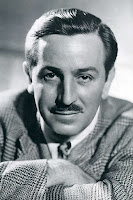


















































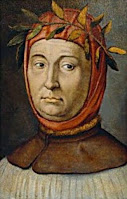

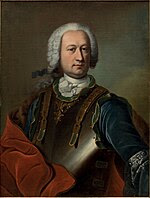
.jpg)


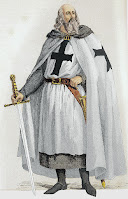








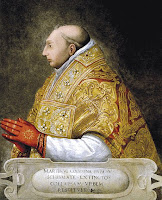











.jpg)





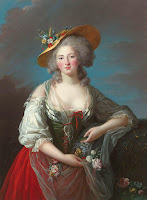




Comments
Post a Comment